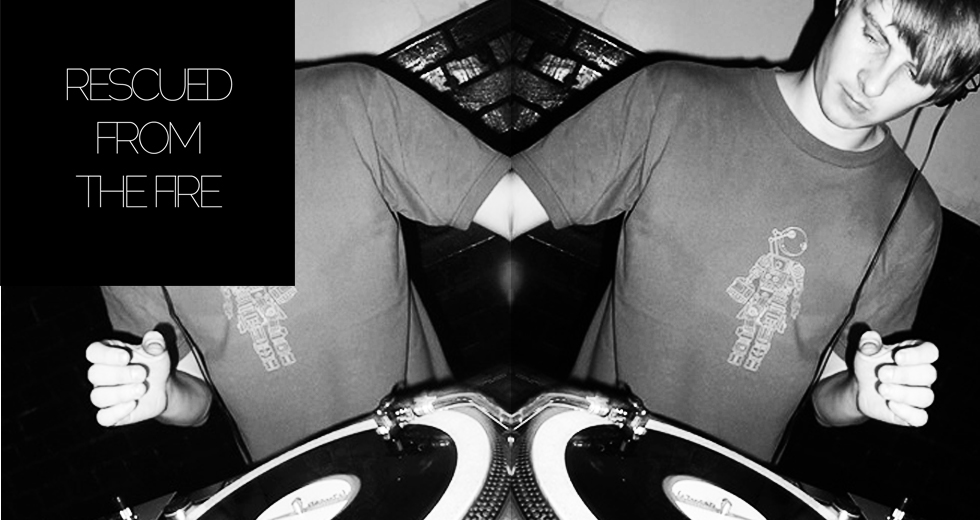Step In The Arena: Performance and Fetish in Digital Times
As bloggers keep raving about "the death of rock", and new technology from laptops to tablets seem to challenge the guitar's once-undisputed role as popular music's greatest fetish, our columnist Joe Muggs takes a closer look at the transformation of the performance in digital times - and catches up with some of those at the forefront of this transformation: James Blake, Flying Lotus and a host of other unique artists.
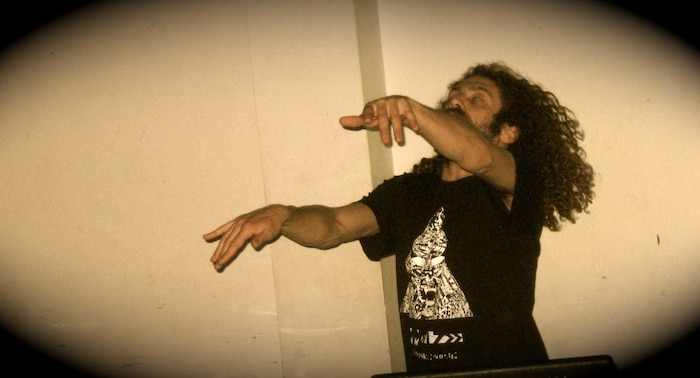
When all the “OMG IS ROCK DEAD?!?” headlines started at the beginning of the year, based on 2010's chart statistics, I tried my best to stay out of it. Firstly because these sort of pronouncements are generally foolish. After all, everyone with ears can tell that in both margins and mainstream there is great rock music being made – and in purely statistical terms, with Radiohead, Coldplay, U2 and REM all back in the fray, 2011's end-of-year charts are likely to look very different from 2010's. But second, and more importantly, because there's something intriguing underlying the idea of rock's death that I wanted to examine once the hype had died down.
I've long held that a focus on the white-boys-with-guitars band above all else has been part of what kept the recording industry from moving with the times – part of a fundamental conservatism symbolised by the clod-rock of Oasis, and even more by Noel Gallagher's “I'm not having it” outburst at Jay-Z headlining Glastonbury. It's what turned Britpop sour, gave us the pathetic spectacle of Pete Doherty as superstar, and formed the root of the hateful “landfill indie” and post-Coldplay boohoo rock that blighted the mainstream through the middle of the 2000s, while the dubstep and grime generation fought to bring something a bit more diverse and genuinely of its time to wider audiences. But rock itself is not the problem. It's the backward-looking focus on the boys/haircuts/guitars format as something special and elevated that has been the issue.
From Pendulum to The xx, Gorillaz to James Blake, there are acts right in the mainstream who can't be considered “dance acts with a live element” or “rock bands with an electronic element”
So the question is: why? Why, more than half a century after its inception, and despite all other developments in the interim, is the rock band format still so important? And as I thought about it, aside from obvious industry conservatism, one thing leapt out: performance. The guitar/drums/vocals format is so adaptable, so flexible, so perfectly arranged as a visual spectacle with its neat symmetries and inbuilt stage props that amplify the movement of human bodies, it has been almost impossible to dislodge from its evolutionary niche. With a guitar band you don't have to reinvent the wheel in order to perform live. Standing up and playing is built into the very structure of the band and songs.
Many acts in other formats have created glorious live shows, even on at the stadium level – whether it's Madonna, Orbital or Busta Rhymes, other formats can clearly compete on the grandest scale – but rock still dominates live performance from the biggest venues to the room above a pub down the street because it is so damned reliable. Without wanting to be too Mojo Magazine about it, it still feels the most like you are having music created right there and then in front of you. You only need to look at how many dance and hip hop acts recruit an instrumental band to recreate their music when they take to the stage to appreciate the attractiveness of this.
But could it be that this is changing? While it's obviously ridiculous to proclaim rock's death as such, the massive underperformance of purely guitar-based bands in 2010 may well represent an erosion of its centrality. The edges are certainly blurring: from Pendulum to The xx, Gorillaz to James Blake, there are acts right in the mainstream who can't be considered “dance acts with a live element” or “rock bands with an electronic element”, indeed who seem to have found their place without any sense of there actually being a division between these worlds.

Dance and hip hop acts themselves seem better able to perform their music without it feeling like a compromise, too. Back in the 1990s I used to wince as great dance producers or rap acts would replace their lovingly programmed beats with a drummer clonking along to a click track on stage. But only recently at A Taste Of Sónar at London’s Roundhouse, I witnessed Dels and Buraka Som Sistema deliver rocking sets that drew their drummers right into the heart of the actual performance rather than having them their as an embellishment or badge of “liveness”. And on the same stage, Gaslamp Killer delivered what was essentially a DJ set with massive performance element, beaming his personality out across the venue and running out to front of stage to perform with an iPad. It was the polar opposite of the cliché of a dance DJ “checking their emails” seated at a laptop, and it was electric.
All of this is precisely what a certain Academy is about as well: taking the most innovative elements and techniques of unique performers and helping others learn from them. It's not a matter of “killing rock”, of toppling it from its throne or anything like that. It’s about creating the skills, re-writing the rules, and nurturing the tastes that will allow the norm to become more diverse and less limiting. And so we have spoken to a few key figures who are already doing just that. Not to scrape out a(nother) definitive conclusion – just to get a sense of the multiple fronts on which transformation is taking place.
For many, the sense is that the opportunities are there to be taken for those who are innovating. GoldieLocks, the Croydon leftfield pop producer/singer (and ’08 Red Bull Music Academy grad) whose experiences in the mainstream industry have led her to follow a path of complete self-determination with her Gut Instinct label, certainly thinks so. “People want to see new things now,” she says. “They may be a little fed up with the guitar, drums and vocal setup. In my opinion I'd rather go and see a really cool electronic live show, which is why I'm making my own show just that: a completely live set-up with MPC, synth, decks and vocals. There is a great audience for live music of all genres so I don't think it's any harder for acts who don't fit a 'standard format' to get shows if they're good. But I hate it when rap MCs or urban acts try to go mainstream and therefore get a live drummer and/or guitars. So wrong! They made electronic music in the first place so why change it to live instruments? Because your label told you to? Wack!”
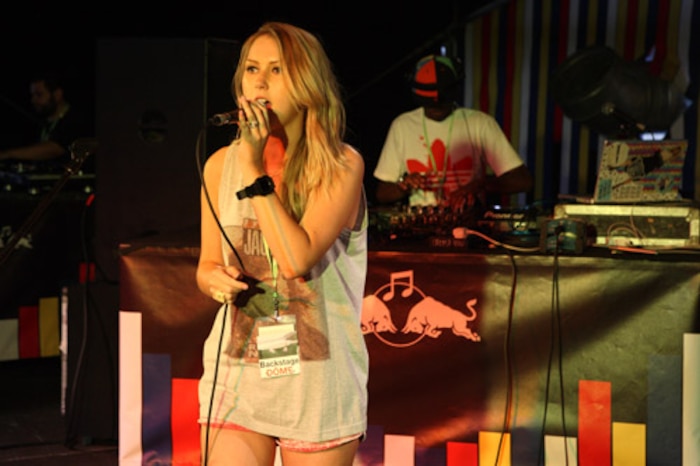
Tim Exile, the sometime jungle producer whose completely live electronic shows, solo and with Imogen Heap, continually push the limits of new technology – and, crucially, get audiences both participating and dancing – cautiously agrees that the climate is getting more welcoming for innovative performers, but thinks there are still preconceptions to overcome. “I do feel like an exception at the moment but this seems to be changing which is great. It's always been a challenge to match the quality of electronic live shows based on pre-recorded material with something that's genuinely live, and it wouldn't work at all without a strong performance element to make up for the relative shambles that inevitably comes when you create something totally live. People have been doing improvised live electronics for a long time but it's mostly been very esoteric and weird, so appears like an in-joke to audiences who don't get it. The challenge is to make it live, involving and communicative at the same time.”
Someone who has had to map out new co-ordinates for live performance recently is James Blake, as his huge crossover success means he barely had the chance to do a couple of small club shows with his live set-up before playing to really sizeable audiences. He was determined not to fall into the electronic musicians' trap of being stuck behind a screen, “as well as not giving much to look at on stage,” he says. “It ruins things for the performer because you can't see anything behind your screen, all you see of the audience if you're lucky is silhouettes. I want to be able to look them in the eye, and see into their souls.” Instead, he had to think about his musical priorities: “The piano is where I began,” he says, “and playing the piano is at the root of what I do, so to create the live show we begun with that and built around it.”

Combining the delicately poised songs of his album with intricate rhythm programming and the sort of soundsystem heft he’s experienced both as a raver and a performer at DMZ and FWD>>, in wide open live venues is a challenge. “The feeling of the set really comes down to wanting to set out my stall,” he explains. “I want moments of all of the things I do, so we had to work out when it makes sense for those things to appear. Like some of my favourite songs or productions, sometimes it's great to hear things only happen once. With our set list growing every time, it's becoming easier to move crowds in the way I want to. We're keeping a strong club element so that when everything drops out and you hear a few moments of solely vocals or piano, it just feels a bit more potent.”
If taking music with club elements into live venues is problematic, so is the reverse. For artists who want to perform to club crowds rather than just expose them to their music, there are still obstacles that few have found reliable ways to overcome. “Club audiences are a bit of a nightmare to perform to,” states GoldieLocks bluntly. “I have found they usually don't want to stop their having fun and dancing to music they know and recognise to stand and watch something live for 30 minutes – especially if the act performing is someone they have never heard of. A show where people have come to see live music is always more responsive.”
Georgia Taglietti, who as one of the driving force behind the Sónar festival arranges performances in club contexts, concert halls and all stops in between, “definitively agrees” that performance as such fights a losing battle in a dedicated dance environment. “Although,” she says, “most of the DJs who've mutated into live performers are well aware of this problem, and get their audience's attention in stronger ways than just performing: via making a big visual impact or other ways. This is the path Richie Hawtin, for example, has chosen – integrating strong visuals, integrating apps for mobiles, and interactive ways to grab the full attention to what’s happening on stage.” And indeed, from Daft Punk to Magnetic Man, it's clear that the integrated audiovisual show – almost a kind of cyborg performance, pushing the artist's personality out to the crowd in abstracted ways – is thriving in clubs and festivals.
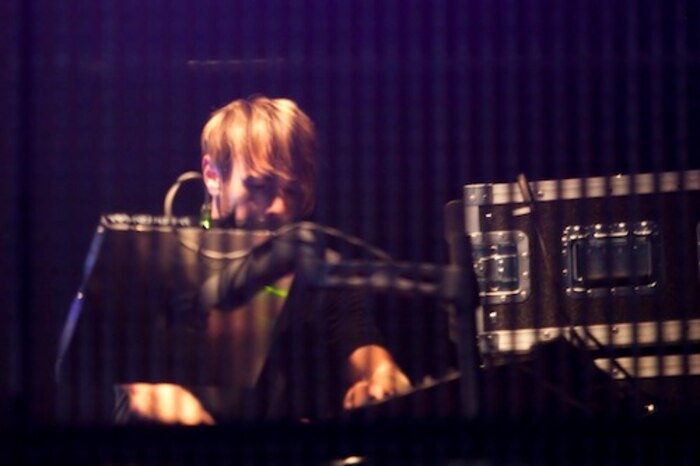
These kinds of shows, however, only work in the big clubs that can accommodate huge visual extravaganzas, and Tim Exile warns that the average club still constrains what can be done. “I think the division between clubs and 'gigs' mostly comes down to infrastructure,” he says. “It takes a lot of time, effort and cash to kit out a venue for a certain purpose. As long as artists who want to engage with the club-type experience are stuck behind floor-level DJ booths there'll be less incentive to push those boundaries to a more performance-based level. Artists will do whatever works for their mode of expression, to hell with the bottom line. Venues have a bottom line so they're less likely to speculatively invest in a refit with that frees the 'electronic' artists from the DJ booth, unless they're funded.”
There are always going to be those who push against limits though. James Blake, for example, is still determined that he can bring his live show to club crowds without having to resort to technological enhancements to keep their attention. “I want to win over both types of audience,” he insists, “but it's going to take a lot of work to be able to draw for whatever is needed to do so. On the other hand, a club is in some ways just a venue, and variation sticks in the memory. Recently I've really enjoyed prolonging those 'club moments' in the gigs, but I don't want to just service clubs by playing an hour of beats. I don't do that even in my DJ sets, and for me, music can be so much more interesting when it challenges you over the course of a gig.”
One act who have very successfully expanded the performance element of their sets within club context is Kode9 & The Spaceape. From early, highly experimental sets, in which Spaceape lurked in the shadows, his disembodied voice emerging into the music seemingly from all directions, they have become far more present. As Kode9's beats take on far more of the dancefloor power of UK funky and other groove-based subgenres, so Spaceape has begun to go out into the dancing crowd with a wireless mic, amplifying the sense of participation in a radical rewiring of the role of the party MC.
Spaceape confirms that the duo's first concern was sonic. “When I started out,” he explains, “I was more concerned with my voice being present and ‘sounding live’ rather than actually appearing live. I was also slightly reticent about entering the ‘world of the MC’ given that there were so may other talents out there who’d been doing it from time. I felt I’d need to find my own style and grow if I were to go down that path. Once I’d decided I wanted to properly play live, though, performing came quite naturally to me. I never get nervous before a gig, just a buzz. As we got more and more offers, and we started to put together our live set, the language, style and tone I wanted to use on stage began to emerge. I found I could never stay in one place when MCing so I’d just roam around dancing amongst the crowd with a cordless microphone. This goes back to the idea of having a voice but no direct focal point. This is easier to do when it’s a DJ/MC set because people come to dance not stare at the stage. But when people see you amongst the crowd they’re at first surprised but then start to respond, you create a real party vibe and people appreciate this, it’s something new.”
This brings up one crucial issue that artists trying to draw the focus of a club crowd come up against: personality. A truly charismatic performer, or one whose physical presence expresses something in their music, can always draw their audience's attention, however immersive the music or mashed the crowd.
The prime example would perhaps be Jeff Mills, whose combination of mind-boggling DJ skills and cheeky, hyperkinetic presence behind the decks, would have people watching his every movement agog, even in the most chaotic and hedonistic mid-90s techno clubs. And now, almost every performer I speak to mentions Flying Lotus as someone who combines mastery of technology and natural physical presence to deliver astounding shows. James Blake, for example, says, “One of my favourite laptop performers has to be FlyLo, not least because he makes it look fluid and human.” Lotus (another Academy alumnus) himself is at a loss to explain how he does it, but finds a clue in his musical background: “It comes from hip hop first, just because that's what I grew up with. There's that competitiveness that if someone kills it with a beat, you've got to really kill it. You've got to come with something bigger and badder. But I'd say jazz comes a close second as inspiration for how I am on stage.”
Both in competitiveness and in the sense of improvisation, Fly-Lo had a great training in the early days of Brainfeeder and Low End Theory, collaborating live with his compadres on the scene. “Yeah, I used to jam with MPCs a lot with Gaslamp Killer back in the day,” he recalls; “and I still love to see what he does every time. I love the way he plays the iPad on stage: it looks like he's holding a baby and poking it in the eye!” And he certainly feels that, although he is continually looking for ways to integrate his computer-based performance with live instrumentalists, there is a way to go before electronic music escapes the guys-checking-their-emails stereotype. “We're getting there,” he laughs. “It's all about the experience though. I know that I want to give my fans an experience they've never imagined. We're working on some stuff right now for the end of the year that's going to be pretty amazing.”
The success or otherwise of what an artist like Flying Lotus does in the live arena – and the shows with his Infinity live band have ranged from the genuinely ground-breaking to ones where his electronic innovations are swamped by traditional influence – is a question ultimately of technology as much as anything else. It's technology that will free the sounds of sampling and synthesizers from their boxes, and allow them to be delivered in ways that can compete with the guitar: things like the iPad, which are both portable, and controlled by intuitive movements rather than pressing buttons.
The developments in new performance interfaces beyond the laptop have been bubbling under for some years now, of course. As Georgia Taglietti says: “I think laptops can sometimes be quite old school and not always reliable so anything that can improve the performance is welcome. We have experienced all type of technological applications in electronic music performances at Sónar. As you know, Björk discovered the Reactable through an exhibition we did long ago, and she still uses it in her live sets. Anyway after tablets and touch-screen real integration in the everyday world, this should be the path that we will follow in the next years.”
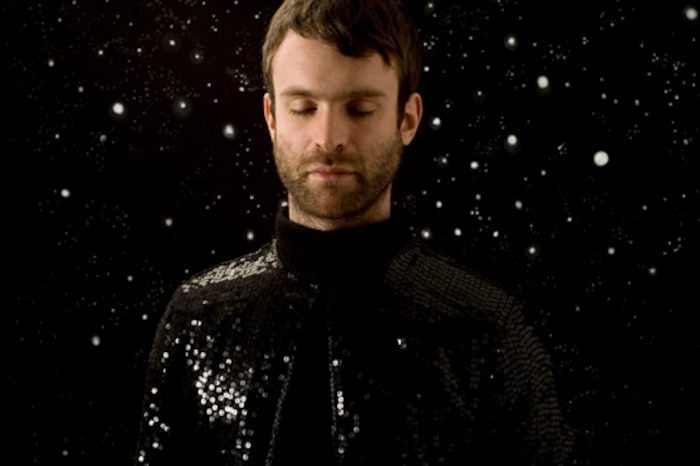
As working out the latest possibilities is integral to Tim Exile's performances, he unsurprisingly has opinions on many new interfaces. “The iPad definitely has great possibilities,” he enthuses. “I've been using a wireless joystick with a wireless headset mic for years and that's always been one of the most enjoyable bits of my show: getting down & dirty with the punters. I think the Monome used á la Daedelus was a good starter in terms of giving the audience some idea of what was going on. There's also a bunch of people messing around with the new Xbox Kinect controller. It's at a pure geek phase at the moment. YouTube's full of vids of people launching clips in Ableton from it, just proofs of concept at the moment, but it won't be long until someone comes up with something really musical and impressive to do with it.”
The number of deathly boring laptop DJs that infest clubland, however, should serve as a warning that new technology doesn't necessarily lead to innovation. James Blake reminds us that there are still endless unexplored possibilities using what exists already. “I think there needs to be various ways of interfacing with a computer for sure,” he says, “but I'll always enjoy writing beats on a grid, as it seems as logical to me as the layout of the piano. There are already loads of ways to make electronic music interesting live, it's just that many producers get into playing live for the wrong reasons. I see a lot of electronic artists pressured into playing live because it seems like the right thing to do, even though they might have no real feeling to play live or might not even enjoy it that much. Ableton is one of the most criminally underexplored programs, I think. It has real potential but a lot of people use it in a very mechanical way.”
And of course there are very basic “real world” technological issues for those trying to do something outside standard band formats. Spaceape points out one of the most obvious for an act with a very distinctive sound: “Getting the vocal levels right, particularly when doing a live set. All venues are different and come with their own particular set of issues but this is the one issue that always exists. I like to get the vocal to sit inside the mix but cut through so it’s audible, not overpowering or getting swallowed up by the music. We don’t travel with a soundman so we are dependent on the guys at the venue who are not used to what we want and this can sometimes be difficult.” And GoldieLocks has run up against problems breaking away from the stage: “I don't really like how acts are on a stage, I like to be on crowd level in the middle but again that's often hard to do as they have all of it wired up for the stage. I'm sure in a few years everything will be wireless and you will be able to play wherever you want!”
What all this amounts to is a moment of vast possibilities opened up by the diversity of current music and the availability of technology, but also vast options for hassle as a million new approaches are worked out by trial and error. Picking up a guitar and getting up on stage must still seem like the easy option to a lot of musicians. And so what we see is not one technological generation supplanting another, in the way that electric amplification did for rock 'n’ roll bands in the 1950s, but a complex evolution. Or as Georgia Taglietti puts it: “I don’t think the band era is over. Nothing in music is never over, it’s summing up, merging, converging, adapting. Most of the young performers still have that format in their minds (or in their blood), as it has been there in their educational years. The inheritance of a band format is still strong and sometimes still considered as a much more 'serious and real' type of presentation. I see that evolution in bands like LCD Soundsystem for example. A hybrid that reflects very well the 'band format' but updated for today’s audiences.”
However, Georgia does think that the wide-open possibilities mean we have moved past the age of the rock god, the iconic Elvis or Jimi or Joe Strummer. “Icons like in rock are quite over, and I think it’s great,” she smiles. “The whole dance scene is mutating all the time so it never stays with one icon. It’s not just a question of quality of the music though, it’s the new internet-quick-browsing type of mode. This happens a lot with Sónar. Bands or musicians we have loved and hyped in the past have been gradually losing their edge after a while, and new ones come after them. It’s much more vital and in a way competitive. But the older ones might be coming back as stars in a blink of an eye.”
And that, more than anything else, sums up the challenge and the opportunities for performers today: you have to fight harder than ever to keep the attention of the fast-shifting audiences of the 21st century, and you have to be on point constantly, not just technologically but in your passion and personality too. And if you are, whatever your vintage or style, you can still create magic moments. Flying Lotus talks with awe of the experience of playing his Coachella set last year, just after Cosmogramma came out: “The stage was set, people filled up the tent, and I just felt some kind of magic up there. It's impossible to explain what happened that night, but it was just something else entirely. People keep reminding me of that moment still, and I will sure as hell never forget it.” Maybe Georgia is right and there are not iconic rock stars any more – but artists like FlyLo are demonstrating constantly that there can still be iconic moments in time like this, moments where something truly new takes place that will be remembered by all who were there.
And the chance to create moments like this makes all the hassles of innovating and trying to create new formats for performance worthwhile, right?
Joe Muggs is a London-based music writer and reviewer for the likes of The Guardian, The Wire, Word, The Arts Desk, and redbullmusicacademy.com. Recently, he examined the fantasy term 'future garage' and musicians' love/hate relationship with genre names. You can follow him on Twitter here.

